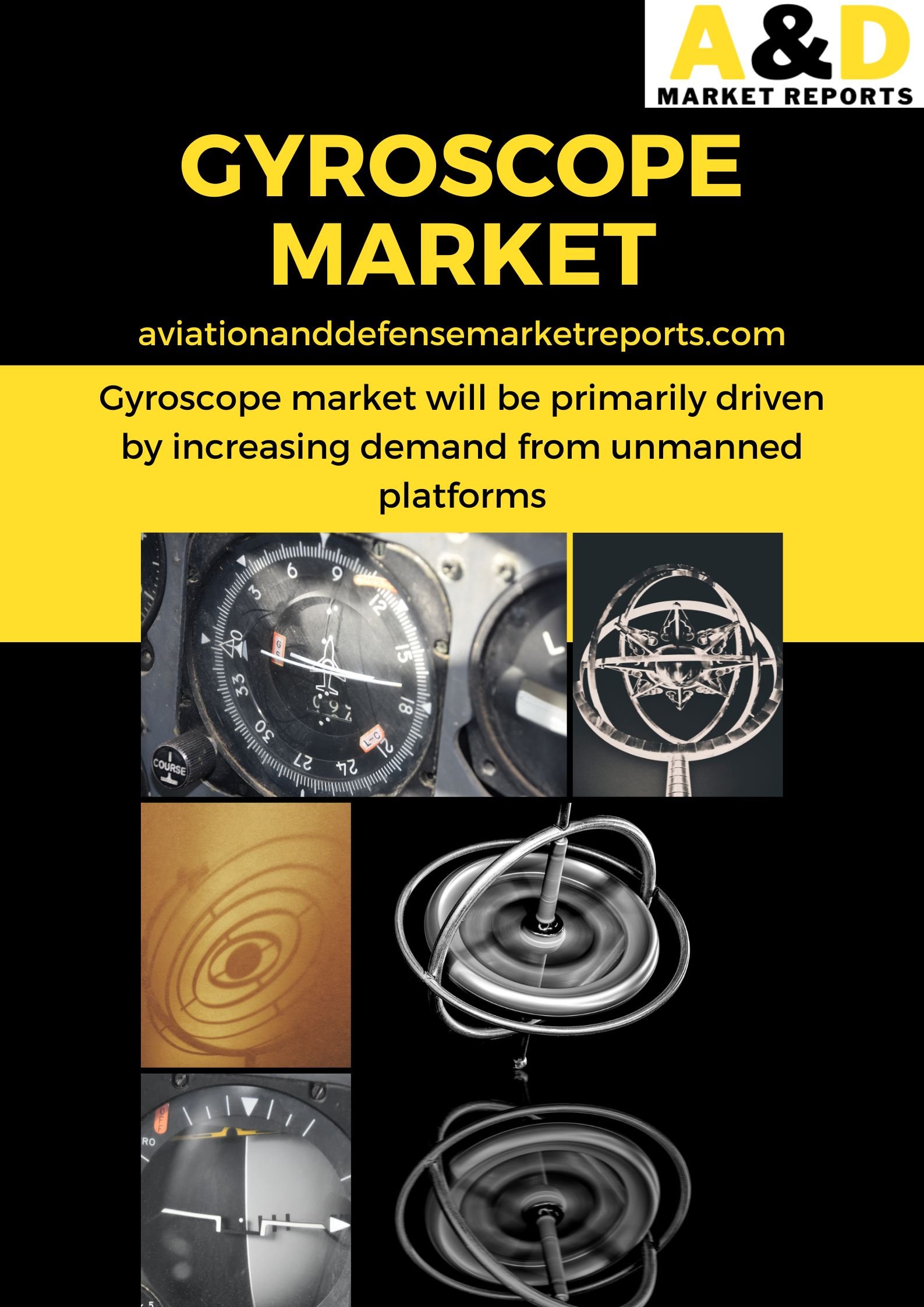As per defense industry, a device used to determine or maintain orientation and angular velocity is a gyroscope. It is a rotating wheel or disc where the axis of rotation is unrestricted in its ability to take on any orientation as per aviation and defense market. According to the law of conservation of angular momentum, while the mounting is rotating or tilting, the orientation of this axis is unchanged. Other operating-principle-based gyroscope are also available, including the very sensitive quantum gyroscope, solid-state ring lasers, fiber optic gyros, and MEMS gyros packaged on microchips that are used in electronic devices according to aviation and defense market. Gyroscope sensors are used in inertial navigation systems on ships, aircrafts, unmanned vehicles, missiles, and weapons. Defense sector states that Motion Gyroscope sensors called Micro-Electro-Mechanical System (MEMS) gyros can track and quantify an object’s angular motion as per aviation and defense market. One, two, and three axes are used to measure how quickly an object rotates around each axis. Although they were primarily utilized for pricey military purposes, they are now also being embraced for low cost commercial applications Automotive and Defense applications according to A&D market. Many of the present systems using Ring Laser Gyros (RLGs) and mechanical gyroscope sensors are being replaced by product segments across MEMS and optical gyroscope sector, particularly Interferometric Fiber-Optic gyros (IFOG). However, applications demanding extremely high scale factor stability remain to be only possible with RLG among optical gyroscope.
Technology trends in Gyroscope market according to defense industry
Advanced fiber optic navigation technology is essential for ground, air, and space vehicles, missiles, and aircraft. Defense sector trends suggest that for safe operation, these devices and other platforms rely on products in fiber optic gyroscope sector. The Sagnac effect is used by a fiber optic gyroscope to identify changes in position or direction. An optical gyro works similarly to a mechanical gyro in this way. The optical gyro, on the other hand, works by employing light that travels through an optical fiber coil. An optical gyro works similarly to a mechanical gyro in this way. The optical gyro, on the other hand, works by employing light that travels through an optical fiber coil. An optical fiber that has been spooled up carries laser light pulses inside products associated with products in conventional optical gyroscope market. Advanced fiber optic navigation technology is essential for ground, air, and space vehicles, missiles, and aircraft. Defense sector trends suggest that for safe operation, these devices and other platforms rely on products in fiber optic gyroscope sector. The Sagnac effect is used by a fiber optic gyroscope to identify changes in position or direction. An optical gyro works similarly to a mechanical gyro in this way. The optical gyro, on the other hand, works by employing light that travels through an optical fiber coil.
Innovations and Trends across Gyroscopes market in defense industry
Gyroscope sensor monitors change in missile pitch, roll, and yaw. In order to stabilize the flight of a missile, at least two gyros are required as per A&D market. Deviations are measured from a fixed reference line that is established by each gyroscope. One such reference is the vertical gyro’s spin axis, which can be used to measure deviations from the pitch and roll axes. MEMS gyroscope offer precise data feedback to seeker stabilization systems, autopilot/flight controls, and roll controls to enhance the performance of rocket boosters on tactical missiles according to aviation and defense market. These devices provide outstanding vibration performance, low angle random walk, and higher gyro bias stability in small designs.
Applications for Gyroscope market defense industry
Apart from the above mentioned applications, there is a significant demand for gyro stabilized cameras on manned and unmanned defense industry platforms. Unmanned vehicles are proliferating in the air, on land, and at sea, and they offer a massive array of sensors and sensor processing that, when combined, might give military forces some of the most in-depth intelligence data. For this new generation of linked unmanned vehicle sensor payloads, electro-optical sensors like infrared sensors, visible-light cameras, multispectral sensors, and hyper spectral sensors are some of the key enabling technologies. Compact multi-sensor gyro-stabilized surveillance systems are in high demand for platforms with limited weight, power, and footprint, such as unmanned aerial vehicles (UAVs).
There are a variety of unmanned EOIR gimbals available, with prices and performance varied. For drone, UAV, UAS, unmanned aerial vehicle, land, and marine applications, an all-weather, tough micro small gimbal imagery is rock-steady stabilized on all axes to guarantee stability even while it is moving. Due to their high versatility, optical telescopic telephoto zoom is featured in both the EO channel and the thermal. Iran, Iraq, Russia, South Korea, the United Arab Emirates, Turkey, and even Taiwan have all begun to engage in domestic drone development programmes. These initiatives aim to create highly advanced drones with lethal capabilities. Hence the unmanned segment will significantly influence the Gyroscope market in the years to come.
See More:- Armored Personnel Carrier Market, Defense Dashboard, Artillery Systems
